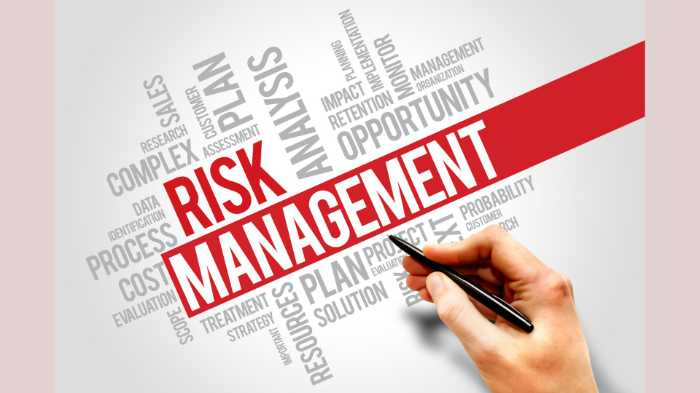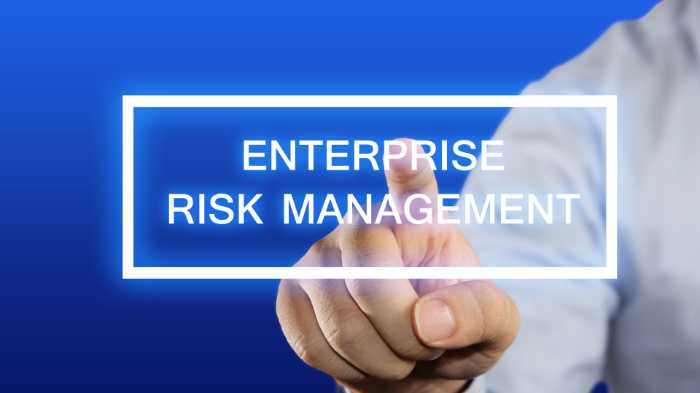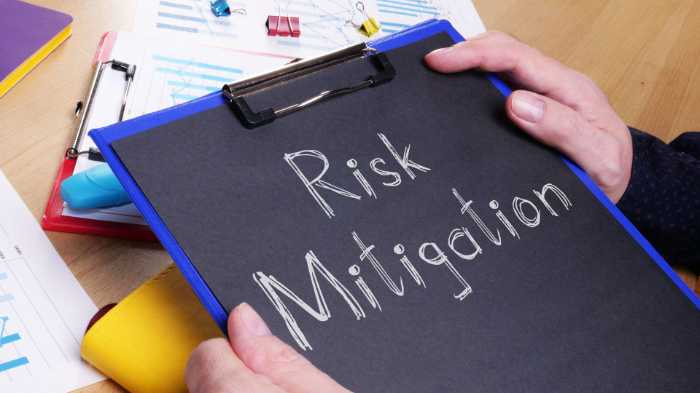If you are looking for a way to improve your financial security, a course in risk management may be the answer. Risk management is the process of identifying and assessing risks, and then coming up with a plan to address them. This can include anything from natural disasters to investment losses. A risk management course will teach you how to identify and respond to potential threats to your finances. You will learn how to protect yourself and your assets against any type of financial risk.
- What is risk management and what does it involve?
- What is enterprise risk management?
- The different types of financial risks that can affect your finances
- 1. Credit risk
- 2. Liquidity risk
- 3. Equity risk
- 4. Currency risk
- 5. Asset-backed risk
- Strategies for mitigating financial risk
- 1. Diversify your income streams
- 2. Build up your emergency fund
- 3. Purchase insurance
- 4. Create a contingency plan
- What are the online risk management courses?
- The benefits of financial risk management education
- How to find the right course for you?
- 1. Define your goals
- 2. Consider your level of experience
- 3. Do your research
- 4. Compare costs
- 5. Look for a course that fits your schedule
- 6. Read reviews
- 7. Talk to an advisor
- Tips for getting the most out of your learning experience
- 1. Get organized
- 2. Take advantage of resources
- 3. Don’t be afraid to ask questions
- 4. Practice what you’ve learned
- What is the role of a financial risk manager?
- Conclusion
- FAQs
What is risk management and what does it involve?

Risk management is the process of identifying, assessing, and controlling risks to an organization. It involves weighing the costs and benefits of different actions in order to minimize the potential for loss. There are a variety of techniques that can be used in risk management, including insurance, hedging, and diversification. Organizations typically use a combination of these strategies to protect themselves from the financial impact of unforeseen events. While risk management can never completely eliminate all risks, it can help to minimize their impact and ensure that an organization is prepared for whatever comes its way.
What is enterprise risk management?

Enterprise risk management (ERM) is a strategic approach to managing risk across an organization. It encompasses all risks that could potentially impact the achievement of an organization’s objectives, including financial risks, operational risks, and strategic risks. The goal of ERM is to identify and mitigate risks before they impact the business, rather than simply responding to them after they occur. To do this, businesses need to have a comprehensive understanding of all the risks they face and how those risks might interact with each other. Enterprise risk management provides a framework for identifying, assessing, and managing risk at an enterprise-wide level. By taking a proactive approach to Risk management, risk managers can protect businesses from potential disruptions and ensure that they are able to continue operating smoothly.
The different types of financial risks that can affect your finances

Risk is an inevitable part of life, but it can have a major impact on your finances. There are different types of business risks that can affect your finances, and it’s important to be aware of them:
1. Credit risk
Credit risk is the risk of a financial loss if a borrower defaults on a loan or other line of credit. Lenders use credit scores to determine the likelihood that a borrower will repay a debt. A high credit score indicates a low probability of default, while a low credit score indicates a high probability of default.
Credit risk is often categorized as either primary or secondary. Primary credit risk is the risk of loss if a borrower defaults on a loan. Secondary credit risk is the risk of loss if the value of collateral drops below the outstanding loan balance. Many lenders require collateral to secure loans, and the collateral may be sold to repay the loan if the borrower defaults.
Mortgage-backed securities are an example of security with secondary credit risk. If home prices fall, the mortgage holder may not be able to sell the property enough to repay the loan. As a result, mortgage-backed securities are subject to both interest rate risk and credit risk.
2. Liquidity risk
Liquidity risk is the risk that a company will not be able to meet its financial obligations as they come due. This can happen for a number of reasons, including a sudden drop in revenue, an unexpected increase in expenses, or a change in market conditions. If a company is not able to meet its obligations, it may be forced to default on its loans, declare bankruptcy, or liquidate its assets.
Liquidity risk is a serious concern for creditors and investors, as it can lead to losses. To minimize liquidity risk, companies should have strong cash management policies and procedures in place. They should also monitor their cash flow closely and take steps to ensure that they have access to sufficient funding.
3. Equity risk
Equity risk is the risk that the value of your investment will go down because of changes in the price of the underlying asset. For example, if you invest in a stock, the stock may go down in value, and you may lose money. Equity risk is often thought of as market risk. Equity risk is sometimes also called “volatility risk.”
4. Currency risk
Currency risk is the risk that changes in currency exchange rates will adversely affect the value of an investment. This type of risk is often faced by investors who have assets denominated in a foreign currency. For example, suppose you own a foreign stock that is priced in Euros. If the value of the Euro falls relative to the US dollar, the value of your stock will also decline.
Currency risk is often mitigated through hedging strategies, such as forwards or futures contracts. Currency risk can also be mitigated by diversifying one’s portfolio across multiple currencies in the financial markets.
5. Asset-backed risk
Asset-backed risk is the risk that a company will not be able to repay its debts with the assets it has on hand. This can happen if an asset crisis, such as a slowdown in the housing market or a drop in the stock market. Asset-backed risk can also occur if a company’s lenders demand that it post collateral, and the company does not have enough assets to meet the demand. This type of risk can lead to bankruptcy or liquidation.
To manage asset-backed risk, companies need to have strong asset management policies and procedures in place. They also need to monitor their assets carefully and take steps to mitigate any risks.
Strategies for mitigating financial risk

As any business owner knows, financial risk is an ever-present reality. From unexpected expenses to natural disasters, there is a multitude of potential threats to your bottom line. However, there are also a number of strategies you can use to mitigate financial risk. Here are a few of the most effective:
1. Diversify your income streams
Don’t put all your eggs in one basket. Having multiple sources of income will help to insulate you from sudden losses.
2. Build up your emergency fund
Having a cushion of cash on hand will help you weather unexpected storms.
3. Purchase insurance
Insurance can protect you from a variety of risks, from property damage to liability.
4. Create a contingency plan
What would you do if your business was suddenly interrupted by a major event? Having a plan in place will help you quickly adapt and minimize the impact on your bottom line.
By following these steps, you can take proactive measures to reduce all types of risk and safeguard your business.
What are the online risk management courses?

Online risk management courses can provide students with a comprehensive overview of the field of risk management. These courses can cover topics such as identifying and assessing risks, developing mitigation strategies, and implementing risk management plans. Some online courses may also offer a more comprehensive look at specific aspects of risk management, such as finance or insurance.
For students who are interested in pursuing a career in risk management, these courses can be an excellent way to get started. Many online courses are available on a self-paced basis, so students can complete the entire course at their own pace.
Some financial risk management courses may also offer an introductory course that can help students get a better understanding of the basics before moving on to more advanced topics. More advanced courses cover specific topics such as financial risk management, operational risk management, insurance, and legal issues.
The benefits of financial risk management education

Although it is often said that “ignorance is bliss,” this is not always the case when it comes to personal finances. Those who are not educated about risk management may be more likely to make poor decisions that could have long-term consequences. For example, they may be more likely to invest in high-risk ventures without understanding the potential downsides. They may also be less likely to save for retirement or to purchase adequate insurance coverage.
However, those who have received risk management education are more likely to make sound financial decisions. They understand the importance of diversifying their investments and of saving for the future. They are also more likely to shop around for the best deals on insurance and to carefully review their policy documents.
Individuals who receive risk management education typically reap a number of benefits, including improved job prospects, higher salaries, a better understanding of financial concepts, more knowledge about investment opportunities, and a better ability to identify and avoid risks in their own personal finances.
As a result, risk management education can provide many benefits. By helping people make informed decisions, it can protect them from making costly mistakes. It can also give them peace of mind by knowing that they are prepared for whatever life may throw their way.
How to find the right course for you?
It can be tough to figure out what course is the right fit for you. With so many options available, it’s easy to feel overwhelmed. Here are a few tips to help you choose the right course:
1. Define your goals
What do you hope to accomplish by taking this course? Are you looking to improve your skills in a specific area, or are you hoping to gain a new understanding of the subject matter? Once you know what you want to get out of the course, you’ll be able to narrow down your options.
2. Consider your level of experience
Have you taken any courses in finance before? If not, you may want to consider an introductory course that covers the basics of financial concepts. On the other hand, if you have some experience in finance, you may be ready for a more advanced course that covers more specific topics.
3. Do your research
Once you have an idea of what you’re looking for, take some time to research your options. Read course descriptions and talk to people who have taken the courses you’re considering. This will help you get a better sense of what each course entails and whether or not it’s a good fit for you.
4. Compare costs
Courses can vary widely in price, depending on factors such as the duration and intensity of the program, as well as whether there are any additional costs such as materials or exam fees. It is important to compare costs before enrolling in a course to ensure that it is affordable for you.
5. Look for a course that fits your schedule
Especially if you are taking a finance course alongside other commitments, it is important to find a course that fits into your schedule. Many courses offer flexible online learning options that allow you to study at your own pace.
6. Read reviews
When choosing a finance course, it can be helpful to read reviews from past students. These reviews can give you an insight into the quality of the course and the teaching methods used. They can also help you gauge whether the course is suitable for your level of experience and whether it is likely to help you achieve your goals.
7. Talk to an advisor
Your academic advisor can be a great resource when choosing a course. They can help you understand the different options available and make sure that you’re on track to reach your goals.
By following these tips, you can be sure that you’ll find the right course for you. With a little effort, you’ll be well on your way to success.
Tips for getting the most out of your learning experience
These are some of the tips for ensuring you get complete value out of your online risk management course:
1. Get organized
Before you start any course, it is important to have a good understanding of your goals and objectives. What do you hope to achieve by taking the course? What are your specific areas of interest? Once you know what you want to get out of the experience, you can create a study plan that will help you make the most of your time.
2. Take advantage of resources
Many courses come with a variety of resources, including textbooks, lectures, and online materials. Be sure to take advantage of all the resources at your disposal in order to get the most out of your learning experience.
3. Don’t be afraid to ask questions
If there is something you don’t understand, or if you want clarification on a particular topic, don’t hesitate to ask questions. Your instructors want you to succeed and are always happy to help.
4. Practice what you’ve learned
One of the best ways to solidify your knowledge is to put it into practice. After completing a course on risk management, try implementing some of the concepts you’ve learned in your everyday life. This will help you better understand how to manage risk and could even help you save money in the long run!
What is the role of a financial risk manager?

Risk management is an essential function in the financial services industry. A financial risk manager is responsible for identifying, assessing, and managing risks that could potentially impact the financial well-being of the firm. Risk managers use a variety of tools and techniques to identify and quantify risks and develop plans to mitigate or transfer those risks.
Risk management is a complex and ever-changing field, and risk managers must be able to adapt to new challenges as they arise. A bachelor’s degree is typically the minimum educational requirement for entry-level positions in risk management, and many risk professionals also hold advanced degrees.
With experience, risk managers can progress into senior-level positions with greater responsibility for overseeing risk management activities across their firm. In today’s dynamic business environment, effective risk management is essential for ensuring the long-term success of a financial institution. A professional risk manager is necessary for every organization to perform the risk management roles to perfection.
Conclusion
So, if you’re looking for a career in risk management or even just want to learn more about the field, consider taking an online course. With so many options available, you’re sure to find one that fits your needs and helps you reach your goals. And, with the right training under your belt, you’ll be well on your way to a successful future in risk management!
FAQs

What is project management?
Project management is the process of organizing and coordinating resources to complete a specific task or achieve a goal. It involves setting objectives, developing a plan, obtaining resources, and managing risks. A project manager is responsible for ensuring that the project is completed on time, within budget, and to the required standard. Project management can be applied to any type of project, from small tasks such as painting a room to large-scale projects such as building a new hospital. By using project management techniques, you can increase the chances of success for any project.
How can I manage risk in my personal life?
The best way to eliminate risk is to learn how to manage it. There are many different types of risks, and specific advice will vary depending on your skill set and the industry you work in. However, there are key areas that all risk managers should focus on, and finance is one of the most important. By taking risk management courses, you can learn how to assess and manage financial risks effectively. This will help you protect your personal finances and make better decisions in both your personal and professional life.
How can we ensure a good finance career?
A career in finance requires a primary focus and prior knowledge in the fields of financial accounting, risk measurement, financial engineering, and strategic decision-making. Columbia University offers risk management courses that can give you the tools you need to manage your finances and make sound investment decisions. The courses are self-paced and can be completed in about eight hours. They cover topics like portfolio management, commercial banking, and asset pricing. Upon completion, you’ll be prepared to take on the role of a financial analyst or portfolio manager.
Do I get lifetime access to a quantitative modeling online course?
Depending on the course and the provider, some courses do offer lifetime access across all materials, and some courses consist of live video lectures that give you access for a limited time only.
How does computer science help portfolio managers?
Computer science helps portfolio managers by providing them with the tools for critical elements of risk management, such as data analysis and modeling. By understanding computer science, portfolio managers can more effectively assess and manage financial risk.
Terms and Definitions
- A financial risk management course is an educational program that provides comprehensive instruction on the tools and techniques used to identify, assess, and manage financial risks. It covers a broad range of topics, including market risk, credit risk, liquidity risk, operational risk, and strategic risk. The course emphasizes practical applications to prepare students for the real world of financial decision-making. It focuses on developing an understanding of how organizations measure and manage potential risks before they become costly losses in terms of lost profits or reduced resources. It also covers core concepts like portfolio diversification and hedging strategies as well as more advanced topics such as value at risk (VAR) models and stress testing. The course typically includes interactive case studies and exercises to help students develop their critical thinking skills for financial analysis. Furthermore, this type of education usually comes with a host of benefits including networking opportunities with industry professionals who can provide valuable insight into current trends in the market. In addition, the cost savings associated with taking a financial risk management course online versus attending a live seminar are significant.

Dean Emerick is a curator on sustainability issues with ESG The Report, an online resource for SMEs and Investment professionals focusing on ESG principles. Their primary goal is to help middle-market companies automate Impact Reporting with ESG Software. Leveraging the power of AI, machine learning, and AWS to transition to a sustainable business model. Serving clients in the United States, Canada, UK, Europe, and the global community. If you want to get started, don’t forget to Get the Checklist! ✅
